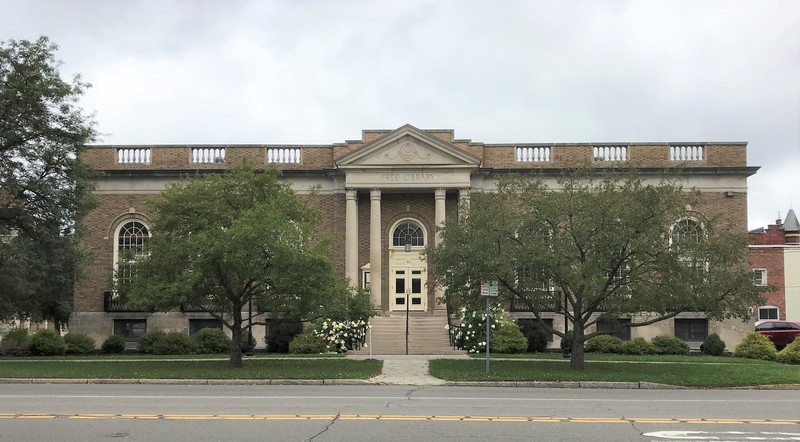Cortland Free Library
Introduction
Text-to-speech Audio
Images
Photo by Elizabeth Wavle-Brown, Assistant Director, Cortland County Historical Society and City of Cortland Historian. Photo Taken in 2017.

Photo by Elizabeth Wavle-Brown, Assistant Director, Cortland County Historical Society and City of Cortland Historian. Photo taken in 2018.

Photo by Elizabeth Wavle-Brown, Assistant Director, Cortland County Historical Society and City of Cortland Historian. Photo taken in 2018.
.jpg)
Backstory and Context
Text-to-speech Audio
Cortland at first was the marketplace for the surrounding farms and mills, but over time it developed to an important town in upstate New York. Cortland County was formed in 1810 with Cortland being its seat. The Towns importance grew tremendously after the first road to Syracuse passed by Cortland. Now much of the trade to and from Syracuse would pass though Cortland, bringing business with it. Years later in 1869 a collage was built, the Normal School. A collage to train teachers. The population of Cortland grew and grew, so by 1900 the number was around 9,000 people. Cortland at this point was considered a City. The City of Cortland had Churches, a Courthouse, Market place, and a collage but it needed a real library. The towns people and surrounding area all contributed towards a library. Elmer Ambrose Sperry contributed a large amount towards the library. Gyrocompasses help Naval ships navigate the oceans and Sperry helped further this technology. Sperry was originally form Cortland and spent time at the Normal school but changed schools to Cornell. With the towns people raised the funds for the library, and was as built then opened in 1928.
The City hired a local architect Carl W. Clark to design the library. Clark also designed the Cincinnatus Library and Brockway Hall on SUNY Cortland’s campus. Clark took inspiration from the Boston Public Library, with its Georgian Revival architecture. This style was popular at the time when it was built. Known for its symmetry, its masonry, being more rectangular, and classical columns. The library was awarded to the National Register for Historic Places for this historic architecture. Because it helps to show the past. The other is that its an important place to the people of Cortland. From hosting events, to the thousands of books they carry.
Sources
Opalka, Anthony. National Register of Historic Places. New York State Historic Preservation Office. Waterford, New York. March 2008.
